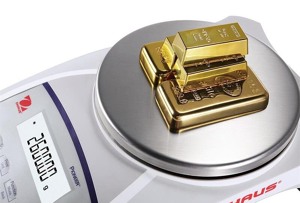Tavex uses cookies to ensure website functionality and improve your user experience. Collecting data from cookies helps us provide the best experience for you, keeps your account secure and allows us to personalise advert content. You can find out more in our cookie policy.
Please select what cookies you allow us to use
Cookies are small files of letters and digits downloaded and saved on your computer or another device (for instance, a mobile phone, a tablet) and saved in your browser while you visit a website. They can be used to track the pages you visit on the website, save the information you enter or remember your preferences such as language settings as long as you’re browsing the website.
| Cookie name | Cookie description | Cookie duration |
|---|---|---|
| tavex_cookie_consent | Stores cookie consent options selected | 60 weeks |
| tavex_customer | Tavex customer ID | 30 days |
| wp-wpml_current_language | Stores selected language | 1 day |
| AWSALB | AWS ALB sticky session cookie | 6 days |
| AWSALBCORS | AWS ALB sticky session cookie | 6 days |
| NO_CACHE | Used to disable page caching | 1 day |
| PHPSESSID | Identifier for PHP session | Session |
| latest_news | Helps to keep notifications relevant by storing the latest news shown | 29 days |
| latest_news_flash | Helps to keep notifications relevant by storing the latest news shown | 29 days |
| tavex_recently_viewed_products | List of recently viewed products | 1 day |
| tavex_compare_amount | Number of items in product comparison view | 1 day |
| Cookie name | Cookie description | Cookie duration |
|---|---|---|
| chart-widget-tab-*-*-* | Remembers last chart options (i.e currency, time period, etc) | 29 days |
| archive_layout | Stores selected product layout on category pages | 1 day |
| Cookie name | Cookie description | Cookie duration |
|---|---|---|
| cartstack.com-* | Used for tracking abandoned shopping carts | 1 year |
| _omappvp | Used by OptinMonster for determining new vs. returning visitors. Expires in 11 years | 11 years |
| _omappvs | Used by OptinMonster for determining when a new visitor becomes a returning visitor | Session |
| om* | Used by OptinMonster to track interactions with campaigns | Persistent |
| Cookie name | Cookie description | Cookie duration |
|---|---|---|
| _ga | Used to distinguish users | 2 years |
| _gid | Used to distinguish users | 24 hours |
| _ga_* | Used to persist session state | 2 years |
| _gac_* | Contains campaign related information | 90 days |
| _gat_gtag_* | Used to throttle request rate | 1 minute |
| _fbc | Facebook advertisement cookie | 2 years |
| _fbp | Facebook cookie for distinguishing unique users | 2 years |
5 Ways to Authenticate Gold Bars

Gold bars have long been a symbol of wealth and investment security. However, with the rise of counterfeit gold bars, it’s crucial to know how to authenticate them to ensure they are pure gold.
This article provides a comprehensive guide to gold bar authentication, ensuring your investment is secure.
Authentication Methods
Authenticating gold bars involves several tests. Each method targets different properties of gold, helping to confirm its authenticity. These methods include weight, dimensions, magnetic properties, sound, and more.
#1 Weight as an Indicator

The weight test is a primary and straightforward method for verifying the authenticity of gold bars.
Genuine gold bars are precisely manufactured, with their weight clearly marked in either grams or ounces. To conduct this test, one must use a highly accurate scale.
By weighing the gold bar and comparing the measured weight to the weight indicated on the bar, one can determine its authenticity.
It’s crucial to remember that gold is a dense metal, so even a slight variance in weight can be a significant indicator of a counterfeit.
The gold bar weight test is particularly effective because counterfeiters often use denser metals like tungsten, which can closely mimic gold’s weight but not perfectly.
#2 Magnetic Test

Gold, by its nature, is non-magnetic. This characteristic provides a simple yet effective way to test gold bars. By using a strong magnet (preferably a rare-earth magnet), one can check for magnetic properties in the bar. Genuine gold bullion bars will not be attracted to the magnet.
However, many counterfeit gold bars contain iron or other magnetic metals, which will exhibit magnetic attraction. This gold magnetic test can quickly weed out many common fakes.
However, it’s important to note that some sophisticated forgeries might use non-magnetic alloys that can still pass this test, necessitating further verification methods.
#3 Ping Test
The gold ping test exploits the acoustic properties of gold.
When struck, a genuine gold bar or coin emits a high-pitched, resonating ‘ping’ sound.
This is due to gold’s density and the speed at which sound travels through it.
To conduct this test, you can strike the gold bar with another metal and listen to the sound it produces. Real gold will produce a clear, ringing ping, while other metals will produce a shorter, duller sound. This test can be particularly useful for distinguishing gold from base metals, which have different acoustic properties.
#4 Ceramic Test
The ceramic test for gold is a simple but effective method to check the authenticity of gold. This test involves dragging the gold bar across an unglazed ceramic plate.
Genuine gold will leave a gold-coloured streak on the ceramic, while fake gold typically leaves a black streak. This happens because real gold is softer and will leave a thin layer of gold on the ceramic, whereas other metals will react differently. It’s a quick and non-destructive test that can be easily performed at home.
#5 Nitric Acid Test

The nitric acid gold test is more complex and is best done by professionals. Gold is known for its resistance to corrosion and oxidation. When nitric acid is applied to genuine gold, it does not react, demonstrating the gold’s purity.
In contrast, impurities in counterfeit gold will react with the acid. Different strengths of acid are used to test different purities of gold. While this test is highly effective, it’s potentially dangerous and can damage the gold item, thus it’s recommended to be performed by experienced individuals in a controlled environment.
Additional Checks: Dimensions and Markings

Dimensions Check: Authenticating a gold bar’s legitimacy involves precisely measuring the gold bars dimensions – length, width, and thickness. Genuine gold bars adhere to strict size standards set by the manufacturer. Using tools like callipers for accurate measurement is essential. Any deviation from these standard dimensions, often necessary for counterfeiters using less dense metals, can signal a fake.
Markings Check: Verifying the engravings or gold bar markings on a gold bar is equally crucial. Authentic bars feature specific markings, including the producer’s logo, the bar’s weight, gold purity, and sometimes a serial number. These markings should be clear and consistent with the producer’s known style. Counterfeits may have poor quality or inconsistent markings. Additional security features like holograms or micro-laser engravings, often used by reputable producers, also help confirm authenticity.
Key Takeaways
Authenticating gold bars is essential for any investor. By applying these methods, you can ensure the integrity of your gold investment. Remember, when in doubt, consult a professional for a more thorough analysis.


















